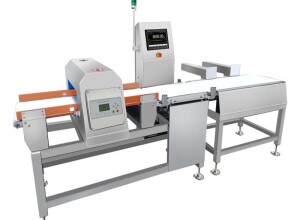GALOCE (China) - Everyone knows that the torque sensor is mainly the test of the torsion, torsion, torque, torsional stiffness, torque yielding of test materials, components, tools and so on.
Regardless of whether the torque sensor is TAS or TOS, depending on the overall strategy of the vehicle and the OEM's requirements for EPS energy, a trade-off between performance and price is required. If the active return and damping control performance requirements for EPS are not very high, then The TOS can be selected, and the positive control can be performed by means of positive compensation, positive torque estimation, statistical analysis of test data, etc., and connected with the output or input shaft of the EPS, and the output and input shafts are connected by a torsion bar, one piece or Two (redundant design) Hall chips are connected to the sensor housing. The disadvantage is that the brush and carbon film resistors wear out during each use. After a long period of use, the accuracy and even failure will be reduced. The sensor application Hall chip measures the magnetic flux proportional to the relative angular displacement of the input and output shafts. If the OEM requires high active return and damping control performance of the EPS, the torque sensor must have a corner signal.
As a kind of precision equipment, the torque sensor has a wide market in the market. Many customers want to know more about the product's own information and the relevant market supply in order to make better choices.
Question 1: So when the torque sensor is purchased, what issues should you pay attention to?
1. Choose a reliable and reliable manufacturer. As a relatively sophisticated device, the torque sensor has high requirements in terms of accuracy, quality and type.
2. there are a variety of specifications and types, designed for different occasions and parts, at the time of purchase, you need to look for the specific specifications required, or provide the on-site photo of the required application site and related materials, so that manufacturers For your recommendation and guidance, a technician will help you.
Question 2: How to wire the torque sensor?
Customers often ask how to integrate torque sensors into equipment or test benches. Different sensors have different specifications and different mechanical and electrical connections. However, modern torque sensors are becoming easier to integrate to meet the stringent requirements of modern industry.
The wiring process of the torque sensor (such as T40B) will be described in detail below using the case:
The T40B is a flanged torque sensor designed for bench testing with linearity errors up to 0.03% including hysteresis. This sensor has four electrical interfaces:
Interface 1 is a 7-pin 30V power interface and a low-resistance path through shunt. It provides a frequency output.
Interface 2 is an 8-pin plug that provides a variety of settings depending on the sensor, providing speed measurements and speed signals with reference pulses.
Interface 3 is a 7-pin plug similar to interface 1 and provides a voltage output;
Port 4 is a 16-pin plug that acts as a torque measurement channel (TMC) and interfaces to the HBM TIM Series. Additional output is available, including scaling, filtering and zeroing - device communication via CAN or Ethernet based fieldbus connections such as PROFNET or EtherCAT.
The sensor is rated for operation from 18–30V and is isolated from the output signal pin to reduce noise interference. A shunt signal of approximately 50% of rated torque is generated by the torque sensor.
The torque sensor and module wiring is very simple, by observing the LED indicators on the torque sensor stator. The X1 port is the power supply and the X2 port is a shunt signal trigger - so by connecting the TIM40 to the T40B, you can not use an external power supply.
All output signals are height-adjustable and provide good control, including signal naming and the number of decimal places in the signal.
In the process of using the sensor, it will inevitably be affected by the environment, temperature, dust and other factors, just like the human skin, it will become very rough under the influence of temperature and so on, so the sensor is in use. The phenomenon of aging or wear and tear in the process is also certain, and failure to deal with these problems in time will cause potential troubles for the device to be used in the future, resulting in large and small faults, and maintenance is a better way to maintain the device.
Question 3: What should I pay attention to when maintaining the torque sensor?
1. Dynamic torque sensor stores relative humidity ≤ 70%.
2. Avoid erosion of oil, dust, water and other chemicals.
3. Always check if the fasteners are loose or not.
4. Check if the voltage in the operating system is within the rated range before running.
5, the sensor works normally for 8-12 months (8 hours / day) to do a slip ring dust maintenance. (Adjust the maintenance period according to the work intensity)
6. Only professionally trained personnel can remove parts for maintenance and device replacement.





























Interested? Submit your enquiry using the form below:
Only available for registered users. Sign In to your account or register here.